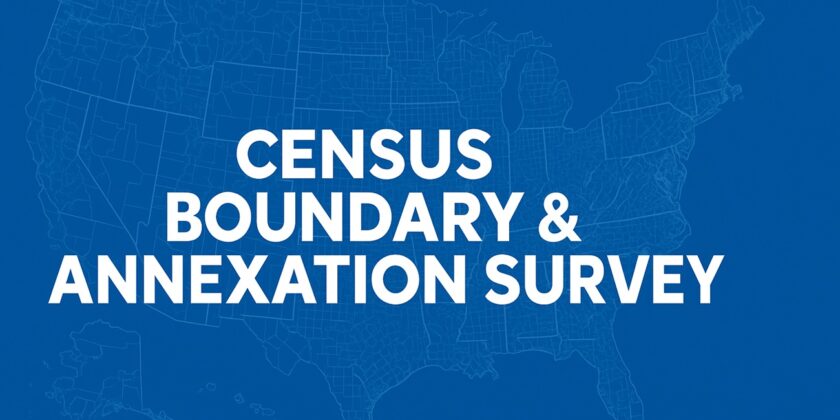Every year, the U.S. Census Bureau invites tribal, state, and general-purpose local governments, counties, cities, towns, and minor civil divisions to verify that its legal-boundary file is still accurate. This verification program is the Boundary and Annexation Survey (BAS). For local officials, keeping your boundaries current is not just cartographic housekeeping. BAS data feeds the American Community Survey, the Population Estimates Program, and the TIGER/Line layers that nearly all redistricting platforms rely on. Accurate boundary lines also protect your jurisdiction’s share of the roughly $2.8 trillion in annual federal funds that are allocated by geography.
Who should participate and what’s in it for you?
Eligible governments: Federally recognized tribes, states, counties (and equivalents), incorporated places, minor civil divisions, and consolidated cities are all invited to participate in this annual survey.
Benefits: Submitting updates “confirms legal boundaries are current and accurate,” underpins local decision-making, and ensures communities receive the funding they are entitled to.
Coordination options: If your state or county already has a “CBAS” agreement (Consolidated Boundary and Annexation Survey arrangement) with the Census Bureau, it may transmit local changes on your behalf, sparing you duplicate work.
Key dates for the annual cycle
| Milestone | What it means |
|---|---|
| January 1 | Only boundary changes effective on or before Jan 1 can appear in the current BAS year |
| March 1 (initial deadline) | Changes submitted by this date will feed the next American Community Survey and Population Estimates releases |
| May 31 (final deadline) | Last day for updates to be reflected in next year’s BAS materials; some boundary corrections may still be processed if time allows |
(The Census also emails non-responding governments in February–April as a courtesy reminder.)
How to submit: digital or paper
Local GIS teams can choose the method that best fits their technical capacity:
| Method | Best for | Highlights |
|---|---|---|
| BAS Partnership Toolbox (ArcGIS Pro add-in) | GIS shops that already use ArcGIS Pro | Automates data download, builds change layers, and exports a ready-to-upload ZIP for the Census SWIM portal |
| GUPS Web | Offices without desktop GIS licenses | Browser-based editor, no installation required. Supports collaborative boundary editing and direct submission to the Census |
| Paper BAS | Small jurisdictions with limited tech | Annotate large-format maps with the colored pencils provided and return them in a prepaid envelope |
All digital submissions are uploaded through the Secure Web Incoming Module (SWIM), the Bureau’s encrypted file-transfer site.
Practical tips for redistricting & GIS staff
- Start with TIGERweb or the BAS Response Viewer to identify mismatches before editing shapefiles.
- Document legal changes. Annexations and de-annexations must cite the ordinance number and effective date; boundary corrections do not require legislation but must be clearly marked.
- Coordinate early with neighboring jurisdictions; the Census will not alter a disputed line without a written agreement from all parties.
- Use the Census support desk (geo.bas@census.gov, 1-800-972-5651) for technical or legal questions.
A timely BAS submission ensures that the base layer every redistricting system starts with, whether you use Maptitude, AutoBound, QGIS, or DRA 2020 – truly reflects your community’s legal reality. By meeting the March 1 and May 31 deadlines, you safeguard both the integrity of your next redistricting plan and your jurisdiction’s fair share of federal resources.
Find us on:



